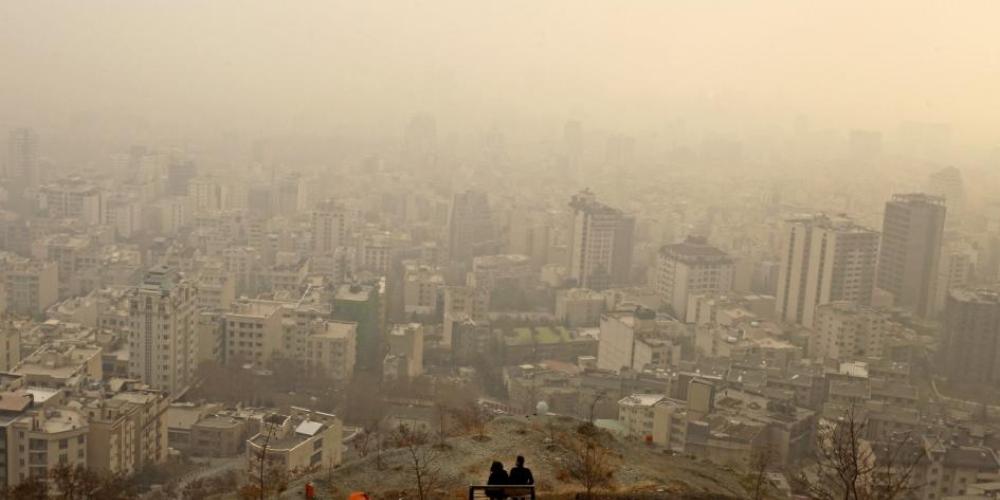Air pollution is killing 3.3 million people a year worldwide, according to a new study that includes this surprise: Farming plays a large role in smog and soot deaths in industrial nations.
Scientists in Germany, Cyprus, Saudi Arabia and the US calculated the most detailed estimates yet of the toll of air pollution, looking at what caused it.
The study also projects that if trends do not change, the yearly death total will double to about 6.6 million a year by 2050, AP reported.
The study, published on Wednesday in the journal Nature, used health statistics and computer models. About three quarters of the deaths are from strokes and heart attacks, said lead author Jos Lelieveld at the Max Planck Institute for Chemistry in Germany.
The findings are similar to other less detailed pollution death estimates, outside experts said.
“About 6% of all global deaths each year occur prematurely due to exposure to ambient air pollution. This number is higher than most experts would have expected, say, 10 years ago,” said Jason West, a University of North Carolina environmental sciences professor who was not part of the study but praised it.
“Air pollution kills more than HIV and malaria combined,” Lelieveld said.
With nearly 1.4 million deaths a year, China has the most air pollution fatalities, followed by India with 645,000 and Pakistan with 110,000.
The United States, with 54,905 deaths in 2010 from soot and smog, ranks seventh highest for air pollution deaths. What’s unusual is that the study says agriculture caused 16,221 of those deaths, second only to 16,929 deaths blamed on power plants.
In the US Northeast, all of Europe, Russia, Japan and South Korea, agriculture is the No. 1 cause of the soot and smog deaths, according to the study.
Worldwide, agriculture is the No. 2 cause with 664,100 deaths, behind the more than 1 million deaths from in-home heating and cooking done with wood and other biofuels in developing world.
Lelieveld said the problem with farms is ammonia from fertilizer and animal waste.
“That ammonia then combines with sulfates from coal-fired power plants and nitrates from car exhaust to form the soot particles that are the big air pollution killers. In London, for example, the pollution from traffic takes time to be converted into soot, and then it is mixed with ammonia and transported downwind to the next city,” he said.
“We were very surprised, but in the end it makes sense,”
Lelieveld noted that the scientists had assumed that traffic and power plants would be the biggest cause of deadly soot and smog.
“Agricultural emissions are becoming increasingly important but are not regulated,” said Allen Robinson, an engineering professor at Carnegie Mellon University, who was not part of the study but praised it.
Ammonia air pollution from farms can be reduced “at relatively low costs”, Robinson said. “Maybe this will help bring more attention to the issue.”
In the central United States, the main cause of soot and smog premature deaths is power plants; in much of the West, it’s traffic emissions.
Jason West and other outside scientists did dispute the study’s projections that deaths would double by 2050. That’s based on no change in air pollution. West and others said it is likely that some places, such as China, will dramatically cut their air pollution by 2050.
And Lelieveld said that if the world reduces a different air pollutant—carbon dioxide, the main gas causing global warming—soot and smog levels will be reduced as well, in a “win-win situation in both directions”.
Iran’s Struggle With Pollution
Based on a World Health Organization report published last year, 80,000 people die prematurely every year in Iran due to air pollution, which has put pressure on the embattled Department of Environment.
Massoumeh Ebtekar, the head of DOE, has said that policies aimed at curbing air pollution have not been implemented since 2005, essentially shifting the blame on past governments.
Twenty-one percent of all deaths in Iran are attributed to air pollution, according to the report.
Official statistics indicate that more than 4,400 people die annually in Tehran alone, meaning one person dies every two hours in the Iranian capital due to high pollution levels.
Other Iranian metropolises do not have it any better: Every year, 3,200 people die in Mashhad because of toxic pollutant levels, whereas Isfahan’s share is 2,700.
In 2013, Ahvaz topped the list of the world’s 10 most polluted cities, while Sanandaj, Kermanshah and Yasouj also made it on to the list.


